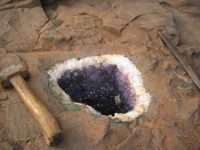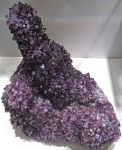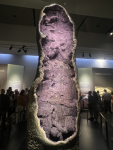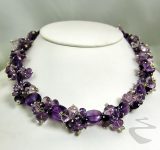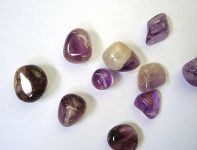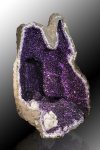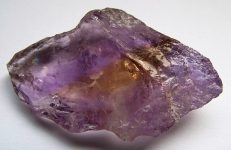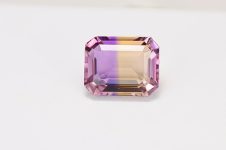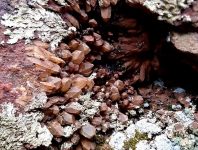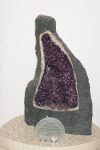Amethyst
VARIETIES OF AMETHYST
![640px-Amethyst_(14902840630)[1] 640px-Amethyst_(14902840630)[1]](https://prehistoriclearn.com/wp-content/uploads/elementor/thumbs/640px-Amethyst_149028406301-qq9ej7kdpnvxy3eprwdxjb8g0hzbgq47qqqnwtw2v6.jpg)
Siberian Amethyst: Known for its deep purple color with red and blue flashes, this is considered one of the highest quality amethysts.
Rose de France: This variety features a light pinkish-purple hue and is often found in jewelry.
Chevron Amethyst: Characterized by its distinctive V-shaped or chevron patterns, formed by alternating layers of amethyst and white quartz.
Ametrine: A natural blend of amethyst and citrine, displaying both purple and yellow colors. Ametrine is primarily sourced from Bolivia.
CHARACTERISTICS
![Amethyst_Geode[1] Amethyst_Geode[1]](https://prehistoriclearn.com/wp-content/uploads/elementor/thumbs/Amethyst_Geode1-qq9esj4rhinb2vvacffqrgk0321cso4e0vn08m2j5u.jpg)
Color: The primary feature of amethyst is its vibrant purple color, which can range from light lavender to deep violet. The color is due to the presence of iron and other trace elements within the quartz.
Hardness: On the Mohs scale of hardness, amethyst ranks at 7, making it a relatively durable gemstone suitable for various types of jewelry.
Crystal Structure: Amethyst has a hexagonal crystal system, often forming as six-sided prisms. It can occur as individual crystals or as clusters within geodes.
Transparency: This gemstone can be transparent to translucent, with the finest specimens being clear with deep color.
HISTORY AND LORE
![Brooch_and_bracelet_with_purple_amethyst_in_ca[1] Brooch_and_bracelet_with_purple_amethyst_in_ca[1]](https://prehistoriclearn.com/wp-content/uploads/elementor/thumbs/Brooch_and_bracelet_with_purple_amethyst_in_ca1-qq9et7kkf7krgqvsdq01kadzj2owcstes8lmpt2ao2.jpg)
Ancient Times: Amethyst has a rich history dating back to ancient civilizations. The Greeks believed it could prevent intoxication, deriving its name from the Greek word “amethystos,” meaning “not drunken.” They often carved drinking vessels from amethyst to ward off drunkenness.
Medieval Period: In the Middle Ages, amethyst was considered a symbol of royalty and used in crowns, scepters, and other regalia. It was also believed to have protective and purifying properties.
Modern Era: Today, amethyst is popular in various forms of jewelry and is the birthstone for February. It is also associated with the 6th and 17th wedding anniversaries.
SOURCES
![At_American_Museum_of_Natural_History_2024_291[1] Geode lined with quartz var. amethyst. Bolsa Mine, Artigas, Uruguay. 2.8m tall, 5,000kg](https://prehistoriclearn.com/wp-content/uploads/elementor/thumbs/At_American_Museum_of_Natural_History_2024_2911-qq9hse41q4atc171ijvkdqp61sen2bbjuqltqo575u.jpg)
Geographical Locations: Amethyst is found worldwide, with significant deposits in Brazil, Uruguay, South Korea, Russia, the United States (particularly Arizona), and Zambia. Brazilian and Uruguayan amethyst is particularly renowned for its quality and large crystal formations.
Geological Formation: Amethyst forms in volcanic rocks, especially in the cavities of basalt flows. It can also be found in metamorphic rocks and hydrothermal veins. Geodes, hollow rocks lined with amethyst crystals, are a common form of its occurrence.
USES
![Amethyst_Gems[1] Amethyst_Gems[1]](https://prehistoriclearn.com/wp-content/uploads/elementor/thumbs/Amethyst_Gems1-qq9htcw2qzmf9lsivgwrfzx811n7z45mbiqshwpmrm.jpg)
Jewelry: Amethyst is widely used in rings, necklaces, bracelets, earrings, and brooches. Its appealing color and relative affordability make it a popular choice for both casual and high-end jewelry.
Decorative Items: Beyond jewelry, amethyst is crafted into various decorative items such as figurines, carved gemstones, and home décor pieces like bookends and candle holders.
Metaphysical Uses: Amethyst is believed to have several metaphysical properties. It is thought to promote calmness, balance, and peace, making it a popular stone for meditation and spiritual practices. It is also associated with the third eye and crown chakras, believed to enhance intuition and spiritual awareness.
METAPHYSICAL PROPERTIES
![Banded_Amethyst_Bracelet[1] Banded_Amethyst_Bracelet[1]](https://prehistoriclearn.com/wp-content/uploads/elementor/thumbs/Banded_Amethyst_Bracelet1-qq9hu8ul7cu68ci3ouq2sruw859p8tohrwxatbe8w2.jpg)
Physical Healing: Some believe amethyst can help alleviate physical ailments such as headaches, insomnia, and stress-related issues. It is often used in crystal healing practices to promote overall well-being.
Emotional and Mental Healing: Amethyst is thought to calm the mind, reduce anxiety, and enhance mental clarity. It is sometimes used as a tool for overcoming addiction and compulsive behaviors.
Spiritual Healing: In spiritual practices, amethyst is used to cleanse the aura, enhance psychic abilities, and connect with higher consciousness. It is also believed to protect against negative energies and promote spiritual growth.
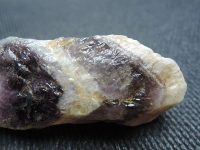

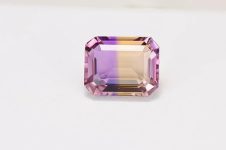
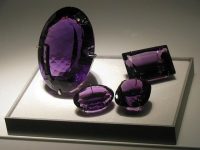
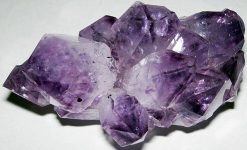
![Brooch_and_bracelet_with_purple_amethyst_in_ca[1]](https://prehistoriclearn.com/wp-content/uploads/elementor/thumbs/Brooch_and_bracelet_with_purple_amethyst_in_ca1-qq9et7kfz50mrx439suyn9czbjzr5q1t7f3ib4luyo.jpg)
![Amethyst_Geode[1]](https://prehistoriclearn.com/wp-content/uploads/elementor/thumbs/Amethyst_Geode1-qq9esj4n1g36e23l8ianufizvjc7llcsg24vtxm3gg.jpg)
